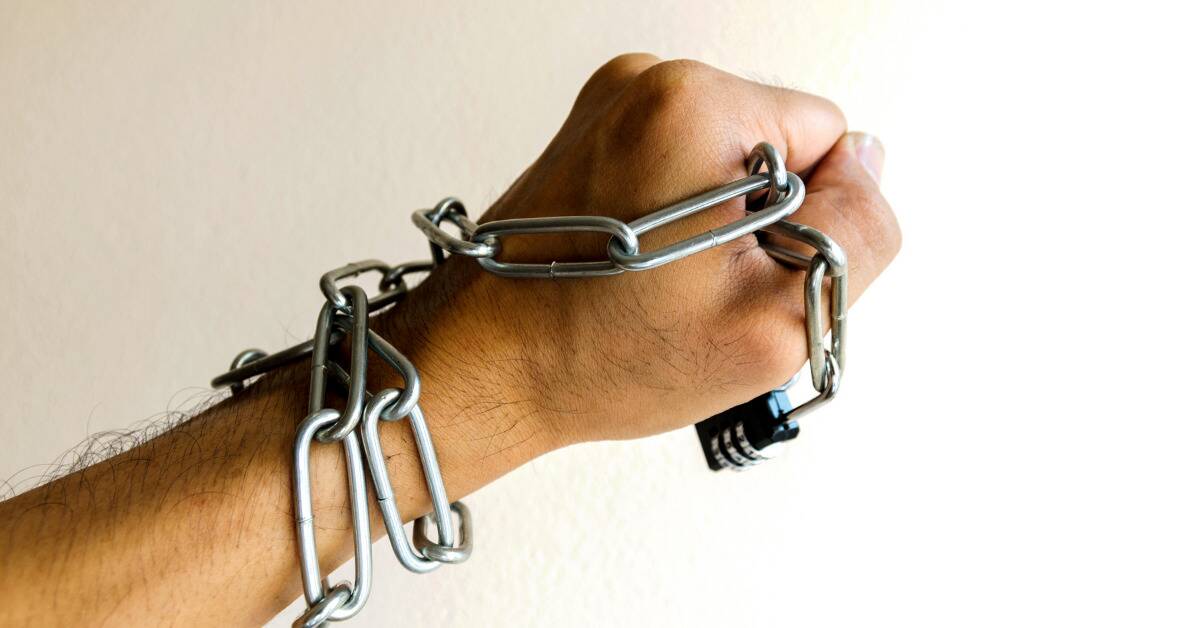Trauma Bonds Are A Manipulator’s Strongest Tool, And This Factor Can Make Them Worse
We all know somebody who's been in a bad relationship. How bad that relationship was will depend on your personal story, but a common thread among them all is that the other person seemed unwilling to leave at the start. Even if they knew how terrible their partner was, they still didn't seem to want to break up with them. Why is that?
This phenomenon can be explained by something called trauma bonding, an evil technique abusers use to keep their victims pinned.
A Dangerous Bond

Abusive relationships are not something that should ever be taken lightly, nor should their severity ever be downplayed. Victims of an abusive relationship feel genuinely trapped by their partner, placed under a variety of threats that keep them from leaving.
Abusers themselves use a number of tactics and psychological tricks to first insert themselves into their victim's life, build up the trust between them, and then take it all away once they're certain that this person won't just up and leave.
One of these tactics is called trauma bonding, and it's perhaps the most insidious tool in an abuser's arsenal.
What Is Trauma Bonding?

Trauma bonding is a term that was coined by psychologist Patrick Carnes in 1997. He used it to describe the sort of flawed attachment a victim can feel toward their abuser as a result of danger, guilt, shame, or any exploitative means the abuser is using.
A trauma bond is a sort of attachment, almost similar to that of an addiction, that a victim may feel for their abuser. If isolated from their support system, another common tactic an abuser will use, this person becomes the victim's sole source of joy, validation, and love.
Willing To Do Anything

Sure, it's surrounded by moments of hellish treatment, of being degraded and punished for nothing, but when it's the only happiness you can get, you'll do anything to try to attain it, even if it means conforming to whatever an abuser wants from you.
This is what makes up a trauma bond. It's a twisted connection forged in darkness, with evil intent, all so the abuser can assure you that you'll never want to leave them lest you be without the only support you have left.
Unique Variables

It's extremely vile, a type of psychological torture that should not be wished upon anybody, but it unfortunately does exist. It's complex, it has layers of deception, and drains its victims of their sense of free will.
Freeing yourself from a trauma bond is unimaginably difficult, but it is possible, especially if you recognize the pattern early on and can shut it down before it gets too intense. There are certain factors that can make it worse, too, including one particular factor that ups the risk quite a bit.
Time Will Tell

That factor is time.
This ties directly into something called the sunk cost fallacy. To put it simply, the more time (or money/other resources) you invest into something, the less likely you are to let it go.
In this context, the more time, energy, and effort you put into maintaining a relationship, no matter how bad it is, the less likely you are to cut your losses and leave. It's within this mindset that tactics like trauma bonds thrive. Abusers will see that vulnerability and latch onto it, reminding you of all the time you've spent together and all the work you've done so you won't want to abandon them.
How To Escape

Trauma bonding is a behavior that needs to be snubbed out as soon as it's detected. Better yet, you leave whoever is trying to enforce it upon you in the dust.
Let's say that you're already trauma bonded, though, stuck in an abusive relationship and metaphorically chained to their ankle. What can you do about it? Now that you've recognized it, how can you escape?
The first thing you have to do is be gentle with yourself. It's not your fault you ended up here, nor are you a bad, weak, or worse person for having been caught in a trauma bond. This is entirely the fault of the person who manipulated you into it, so self-forgiveness should be present in every action you take from here on out.
Fighting Against Yourself

Next, know that leaving may not be easy. Even when you're aware of the abuse, abusers purposefully make it extremely difficult for their victims to leave. This will take work, but it will be so worth it in the end when you have your freedom back.
Every thought, every instinct in your brain will tell you you'll never get out, that this is all there is for you, but these are just the teachings of your abuser that you've internalized. That was their goal all along. You have to muster up the strength to take the steps anyway, no matter what your brain is screaming at you, and come out the other end.
Drawing The Line

So, what are those steps?
First, start cutting your abuser off from avenues of access. Start small. If they know any passwords to accounts or devices, change them. Do it one at a time with big intervals if you need to, but just make sure you have at least one completely private line of communication that they can't access.
Once you have that, get in contact with some sort of support. This could be a friend, this could be a family member, or this could be a local domestic abuse helpline. Whatever it looks like, reach out to them. Let them know what's going on so they can give localized advice.
From Start To Finish

Also, be sure to get this all recorded down. You want a paper trail of all the steps you've taken. If physical harm was an element, go to a doctor to get an assessment done so any injuries can be marked.
Speaking of a paper trail, write a list of every abusive thing your partner has done. As much as it'll hurt, you'll want to remember this. Write down a timeline, too, if possible, even a loose one.
If you're going to need legal assistance, be it due to shared assets or custody needs, now's the time to reach out. Even a free consultation will give you an idea of what to expect.
Hit The Bricks

When you have all your affairs in order, that's when you leave. Whether that's a verbal breakup with people present or vanishing while they're out of the home, be sure you have a proper plan and people to protect you.
This may seem like a pretty big escalation. From one abusive tactic to steps on how to leave the relationship altogether? Isn't that a little much?
Not really, no. Trauma bonds are among the deepest, most pervasive techniques an abuser can use. It plants itself deeply in a victim's psyche and changes the way they see the world, their abuser, and themselves.
Endless Patience

To rid yourself of the effects of trauma bonding, you'll need to completely remove yourself from the situation that reinforces it. Otherwise, it will always come back in some way.
Once you're free, that's when you can start truly living for yourself. Healing will be a slow process, but the sooner you start, the sooner you'll feel that sweet sensation of real freedom.
Start by doing things your abuser never let you do. Reconnect with people they made you cut off, present yourself in ways they forbade, and get your life back in whatever ways bring you the most joy. Let happiness be your guiding light in this new, exciting chapter of your life.





